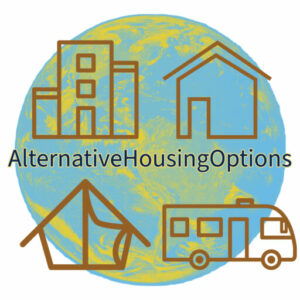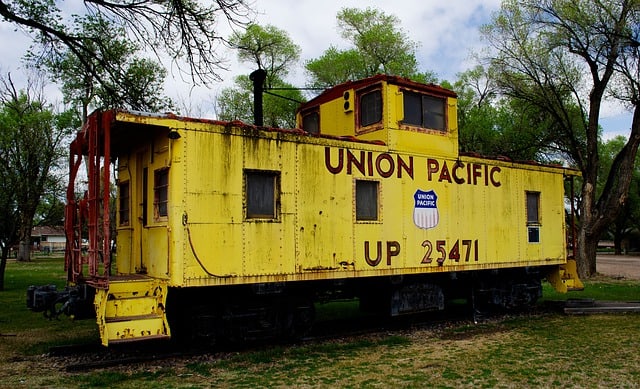Real estate in the United States has just gone nuts, especially over the past five years. Prices in building, buying, and renting seem to be increasing daily with no true end in sight. However, there are options. Not everyone needs to live in a home built in a neighborhood with zoning laws and city water.
Alternative housing ideas can include:
- Houseboats,
- Cob homes,
- Yurts,
- Tiny houses,
- Container homes,
- Earthships,
- Earth berms,
- Earthbag homes,
- and much, much more.
Whether you want to travel the world or put down roots (maybe a treehouse), an alternative housing solution will fit your lifestyle.
What is alternative housing?
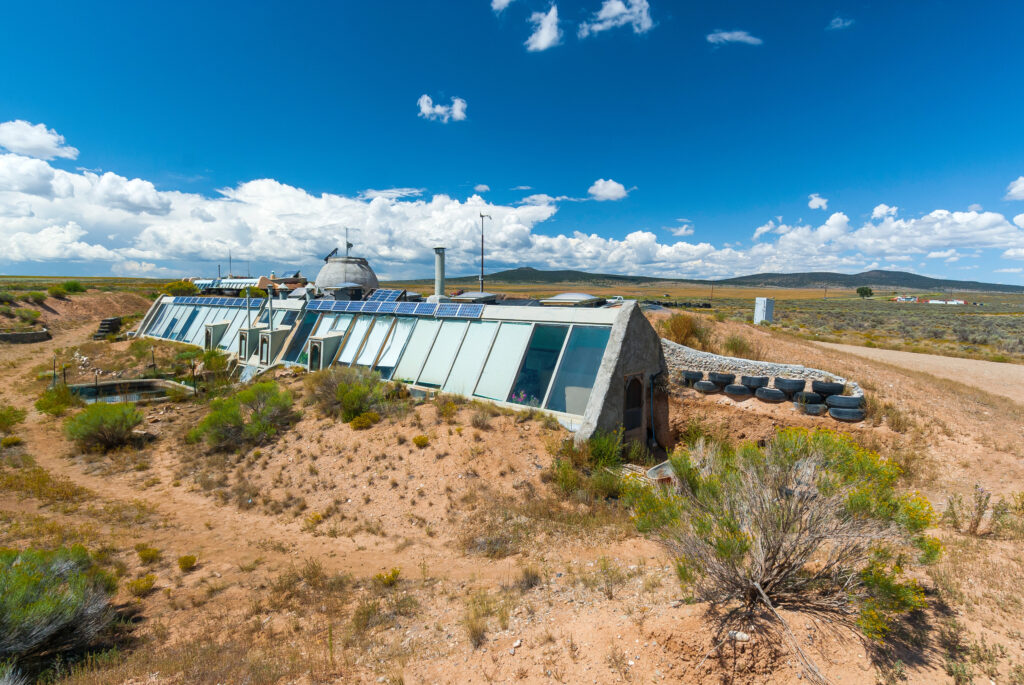
Alternative housing is any living space other than a single-family home. Alternative housing breaks the mold–showing people that you can live anywhere, in almost anything, and have a great life at the same time.
Most of the typical neighborhoods in the U.S. are comprised of single-family homes like a house, condominiums, townhouses, rowhouses, and the like. One family lives in these homes. Some neighborhoods have a mix of other properties like multifamily homes like duplexes (two-homes together either side-by-side or upper-lower), or triplexes (three-homes or units again side-by-side or upper-lower configuration). Then you move into a more common apartment with four or more units.
If you’re like me and have spent countless hours watching some men build clay homes in the middle of the jungle and thought, “that would be so cool,” you have seen some alternative housing options. But before we dive into other forms of alternative housing, let’s consider why you might want to choose alternative housing and how exactly alternative housing works in a rural or city setting.
Why would you want to live in alternative housing?
Alternative housing can be a big draw for many reasons.
First– you may be environmentally conscious and want to live “green, sustainable, or off-the-grid.”
Many alternative housing options will help you do just that by recycling items previously in a landfill. You can reuse these items in an Earthship, earth berm, cob, pallet home, or straw home. You can also use other sustainable materials like aircrete, hemp concrete and earthbags to build alternative housing.
Second– maybe travel and adventure is your idea of the “good life,” but paying to stay in a resort month-in and month-out does not sound fun.
A few alternative housing options for you would be living in a recreational vehicle (RV) or converting a van, minivan, old ambulance (a friend of ours has one), camper, mobile home, tiny house, or houseboat. These homes literally can be towed anywhere you want to go or, in some cases like the RV, van, minivan, ambulance or houseboat– are an all-in-one home and vehicle.
Third– not everyone can afford a 30-year mortgage or build a home.
There are areas in the U.S. where the average cost of a home is $441,000 in May, according to the May 2023 market report by realtor.com. Rents are keeping right up with housing costs. So, where can you turn to find reliable, stable, and affordable housing? You look for alternative housing options.
How does alternative housing work?

Alternative housing was made glamorous with the start of the tiny house movement in 1999. Jay Shafer built one of the first tiny houses on a trailer, according to tinyhousebuilder.com. There have been shows on YouTube and TV networks like Discovery and HGTV bringing the tiny house movement to the mainstream since 2014.
Some cities and counties have rules and regulations about alternative housing options, so before you begin your discovery process, look at local zoning laws to determine where you can build, set, or install your alternative house.
Alternative housing works just as a permanent single-family home. You choose your land, plot, or lot, buy it from the current owner, and begin your set-up, building, or parking. Again, local building laws come into play, so be sure to follow the building codes for plumbing, electrical, and insulation. Of course, if you’re going off-grid, you’ll also want to get guidance from the local building inspectors.
What are my options when it comes to alternative housing?
When it comes to alternative housing ideas, “the sky is the limit.” More traditional building materials like wood logs for a cabin, concrete forms instead of lumber, bricks, and stones are still used in alternative housing. These houses can be unique when you start working with alternative building materials like clay, cob, hemp concrete, shipping containers, prefabricated homes, wood pallets, recycled glass bottles, recycled materials from the landfill, earth, and more.
To give you a better idea of some of the alternative housing options and to find one that might suit your lifestyle, let’s take a look at 25+ alternative housing ideas.
25 examples of alternative housing that fit your lifestyle
Homes for those who love travel
1. Converted Bus
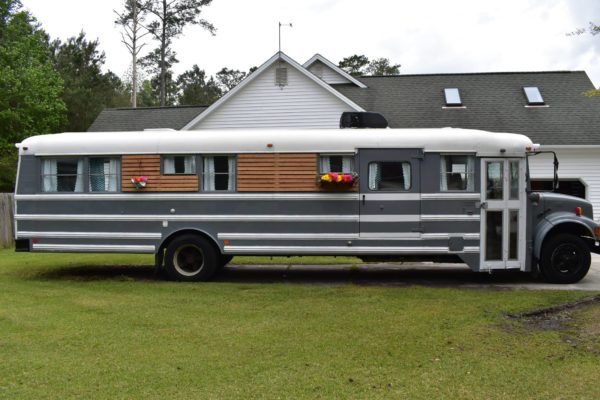
A school bus has become a popular choice of alternative housing. By pulling out seats and combining areas, you can make larger sleeping spaces. Countertops can give you a table, kitchen, or activity space. Compost or container toilets and self-plumbing sinks can solve the issue of water and sewer. And of course, you can park anywhere overnight parking is allowed, which makes the world your home.
2. Moving-Truck home
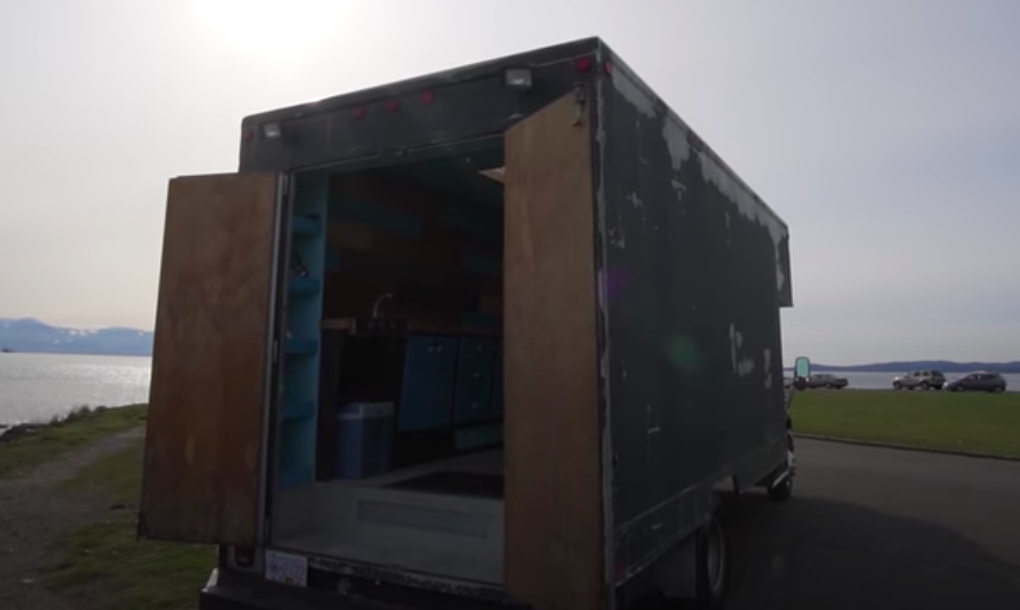
A moving truck might be an exciting way to live that is the complete opposite of traditional housing. You can configure the box portion of the truck into any room you’d like from a bedroom, a living/bedroom and add those same self-contained amenities of sink and toilet. Again, if travel is your passion, why not bring your home with you. Similar to a moving truck conversion, many. have chosen to convert old ambulances. Alternative housing options interviewed a gentlemen who did just that, check out the interview here.
3. RV
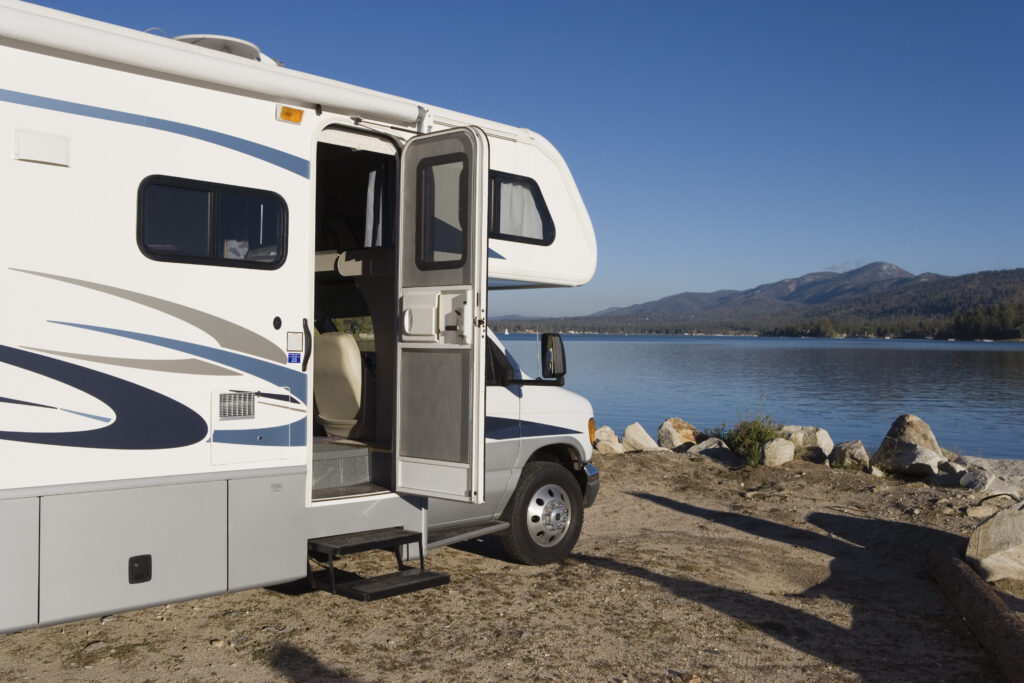
There are 10 million people in the U.S. who have RVs. So the 7 million others are recreational users. According to Rvlifestyle.com, there are “almost” 2 million full-time RVrs with no permanent address. RV living can be exciting and relatively inexpensive, considering the sites you can see and the freedom available. The average cost to live in an RV park will generally range from $500 to $1500 per month, generally with your electricity as an added cost, according to rvingknowhow.com.
4. Van Home

Camping vans or converted van homes are also becoming a popular way to travel. A van can be a living arrangement that doesn’t cost a lot. Like an RV or other converted vehicle, fuel and parking are the costs that add up over time. However, with a bit of ingenuity, you may be able to find free parking.
5. Camping
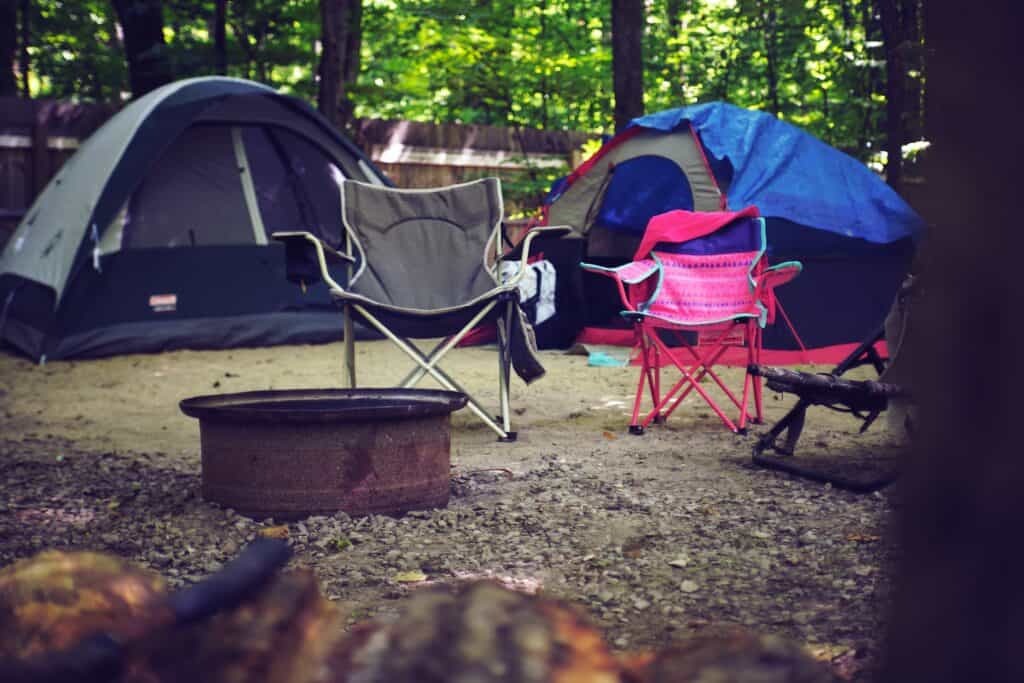
Camping is a favorite for many people. Being in nature, enjoying a fire and some fire-roasted food is a great way to be together with family and friends. There are many campsites across the United States to check out and reserve a spot. Camping might be a short-term living situation, but it is cheaper than a hotel or apartment, depending on the campground and amenities. For many, it is seasonal, and you’ll want to take that into account when planning.
6. Tipi

Similar to camping, a tipi offers an alternative to the traditional tent. You have the same opportunity to see many areas of the U.S. and stay in many campgrounds. If you decide to go full-time, a separate structure or tipi as an outhouse will work great with a composting toilet and self-contained sink or portable water source.
7. Yurt
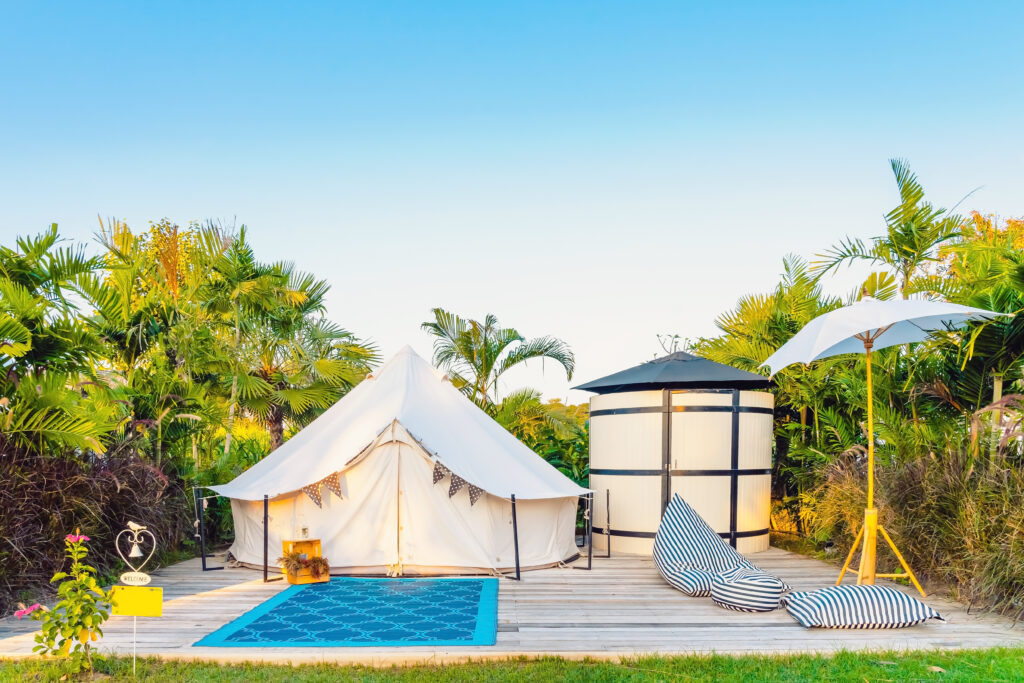
Yurts are circular homes that have been around for thousands of years. Traditionally, nomads in Asia used them who would travel and bring their homes with them. Modern yurts have evolved into full-time, year-round housing in all types of climates. They are sturdier than a tent or tipi and still give you the freedom of choice to travel or stay.
They are customizable and can have many of the comforts of a traditional home, like a loft bedroom separate from the living space. The downside is that they require land and concrete or wooden platform to set on.
8. Sailboat

It is possible to live in a sailboat; it is even possible to find free ports to dock. According to hobosailor.com, this Canadian couple has lived free of land since 2005. Their tips are to keep a tight budget and find free or cheaper ports to anchor for the night, fuel, or shower. They average about $1,000 a month in costs from repairs, gas, food, and ports.
9. Houseboat

Houseboats similar to sailboats can be a reasonable alternative housing option if you love boating. You can make lists of private docks or accessible public areas to anchor if you’re traveling or fall in love with a place to dock permanently. Some states do not charge property tax on houseboats. Boat slip rentals can be less than an apartment.
10. Tiny home
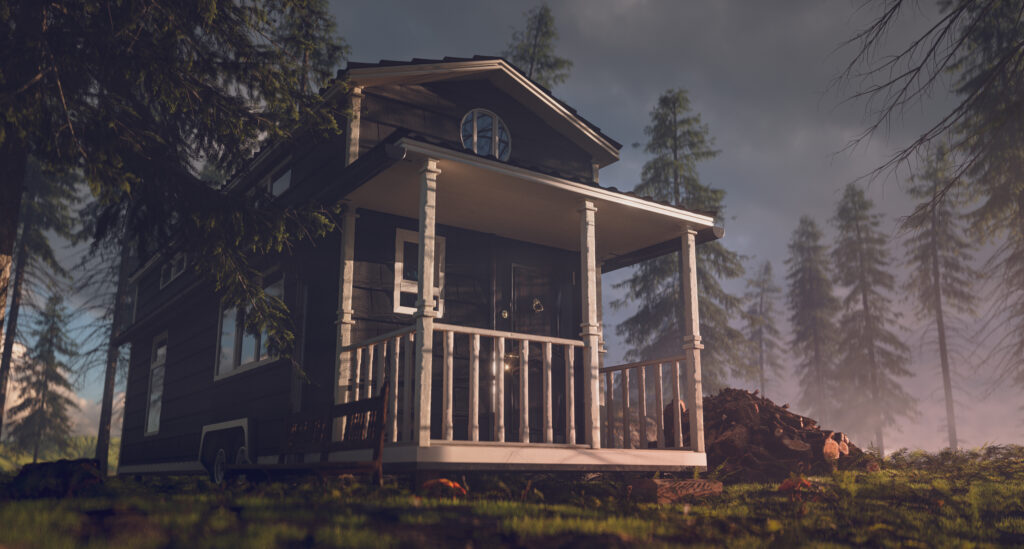
Tiny houses have had TV shows, specialty builders, and fabricators since the first in 1999. This movement is a way for people to cut costs, downsize, and live a simpler lifestyle. A tiny house can range from 6 to 8 feet wide and up to 40 feet long. You can customize a tiny house to have all the amenities of a traditional house with a much smaller cost and footprint. Since most are built on a travel trailer, Parking can be similar to finding an RV lot for boondocking. However, Tiny Home Builders has a parking guide if you’re looking for a permanent place to call home. Discover more about tiny houses in our article, “What is a Tiny House.”
11. Boxcar home

Like a tiny home, a converted boxcar can make a great place to live. You can buy boxcars like any other automobile from a rail yard or dealer such as SterlingRail.com. A boxcar has a more extensive interior than an RV or bus and can allow you more permanence if you’re looking to settle in a specific area. However, they are mobile, and you can travel and bring it with you.
Homes for those who want more permanent structures
12. Straw Bale Home

Building a home out of straw bales may seem unique, but the concept has been tested all over the midwest for hundreds of years. Straw, while now covered for storage, was often stacked in a barn loft for the animals for the winter. Once complete with clay or plaster straw bale homes look great and are well insulated for any weather. The initial build can be pricey, but you can find doors, windows, and other structural items at a Habitat for Humanity store or the landfill. I find this to be a very interesting idea.
13. Cob House

Cob houses fascinate me. Cob is a building material made from straw, water, soil mixed with sand or clay, and sometimes limestone. It is durable, fireproof, and resistant to earthquakes. You can build any size or shaped structure, including round walls with cob. However, like those men who build jungle structures with clay, cob is labor-intensive. Discover more about cob houses in our article, “What is a Cob House.”
14. Earthbag home
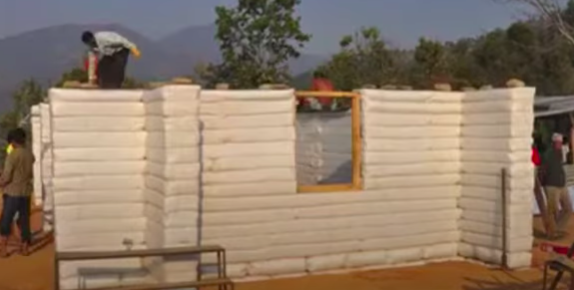
Earthbag homes are made out of bags filled with clay, silt, sand, and gravel stacked together like bricks to make a house. They can be finished off with a coating of clay or plaster on the outside or left as-is. The material for earthbag homes is relatively inexpensive since you only need to acquire the bags and barbed wire for the structure. You will use the soil to fill the bags at the building site.
Like cob, they have natural insulation due to their thickness. The structure is slightly rounded compared to rectangular bricks and ends in a dome structure. Proper plastering on the exterior will keep out rodents, insects, and mold.
15. Earth berm

Earth berms are built directly into the ground. If you’re a movie fan, a home such as one from the Lord of the Rings may come to mind. Other than windows, only the front entrance is visible on the exterior. Earth berms are a great form of alternative housing that is off-grid. The temperature is naturally kept at comfortable levels by being in-ground, and you are out of the elements.
16. Treehouse

One way to save the forest is to become one with the forest by living in a treehouse. I don’t know one person who did not want to live in a treehouse at some time in their young lives. TV has also popularized this form of alternative housing. However, you don’t need to go full scale and use the most expensive materials to build your dream. You can keep the living space simple, like a tiny house, and use recycled materials where possible.
17. Shed home

Prefabricated shed homes are starting to become a trend. You may have even seen some of these sheds for sale along the highway. Like other converted homes, these sheds are converted into tiny houses. The living space isn’t large, but you can make the most with customized storage and unique bathroom fixtures.
18. Geodesic dome home

The geodesic dome home looks like a yurt with a dome top. It consists of the hubs, struts, plywood, dormers, extensions, and skylights. These homes are also very energy efficient. They are unique looking and can be built relatively inexpensively compared to a traditional home. A dome home, a kit for a 40-foot in diameter, was $30,000.
19. Silo House
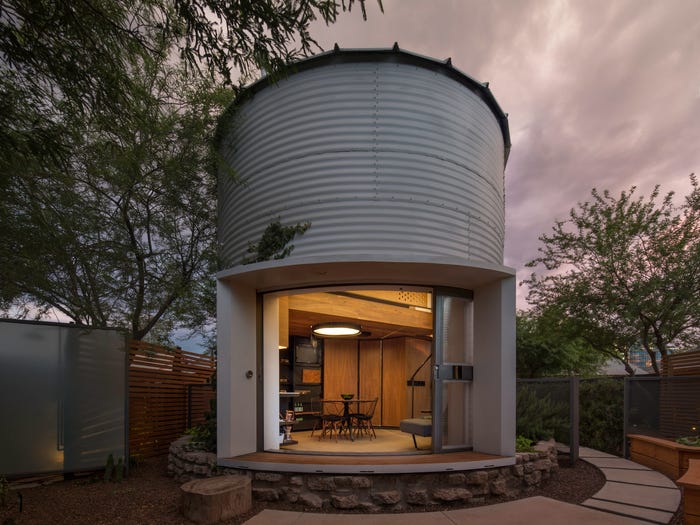
Silo homes are built from old or new grain silos. Like other tiny homes, the silo home is converted to include a kitchen, bathroom, living area, and sleeping area. A couple featured in Business Insider shared how they purchased a silo off of craigslist and turned it into a tiny house with sleeping quarters upstairs and everything else downstairs. This is a great idea when you have a warm climate and can move some activities outdoors on a deck or patio.
20. Modular Igloo

Today’s modular igloos modern igloos are assembled from sections of expanded polystyrene foam. The foam makes the structure rust, termite, and rot-free. The finished home is also naturally well insulated. The igloo is wind and earthquake-resistant. These structures do well in all types of climates. The starting price is right around $30,000 for the shell.
21. Container house

Container homes are very trendy, and compared to building the same amount of space in a traditional home; they are much cheaper. With this trend, you can find prefabricated container houses that sell for as little as $15,000. Other containers homes sell for $30,000–$60,000 and luxury homes for over $100,000. You can put a couple together to customize your space. Compared to the traditional home, you can find a container ready to build out at an affordable price, and if you’re handy, you could DIY it for less than $10,000. Discover more about shipping container houses in our article, “What is a Shipping Container House.”
22. Pallet Home

Wood pallet homes are a popular form of alternative housing. With a bit of hard work, you could get wood pallets for free or very inexpensively. Newspaper companies, pet stores, small businesses, recycling centers, shipping centers, and more may have pallets they are willing to give you. You will need concrete blocks or a foundation to keep the pallets dry for your build, but by painting and varnishing them, your alternative home should help you save for more permanent housing. Check out this project from Easy Pallet Ideas, where this builder created a “man cave” in his backyard with wood pallets.
23. Earthship
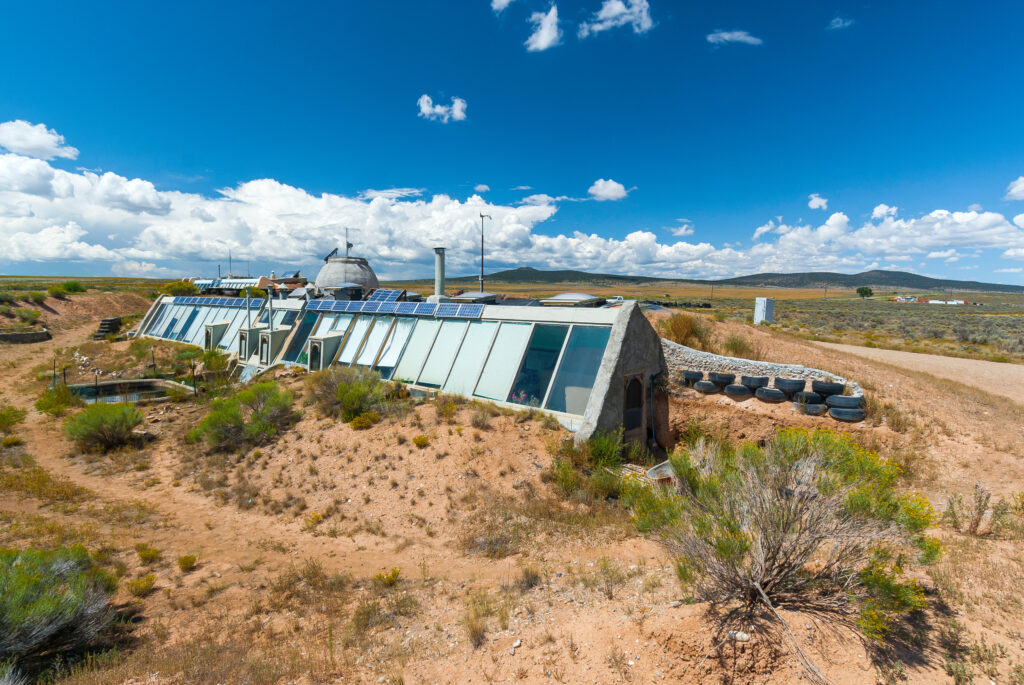
Still working with the recycling and sustainability of alternative housing, an Earthship is an eco-friendly and sustainable home. It is also one that you could build to be off-grid. Earth Ship Global, a builder of earth ships, is built with six principles in mind: build with recycled materials, water harvesting and filtration, contained sewage treatment, thermal/solar heating and cooling, food production, and the use of renewable energy. Earthships could get pricy, but they are green to build an alternative home. One couple built an Earthship home for $55,000 and have no electric bills.
24. Hemp concrete home

Hemp is renewing its use as a sustainable building material for alternative houses. Hempcrete homes explain that hemp concrete or hemp-lime is “a biocomposite made from a mix of the woody core of the hemp plant, lime binder, and water. The hemp core (also hemp hurd or shiv) has a high silica content that strongly binds with the lime. As a result, you get a lightweight, cementitious material with good insulation properties that weighs six to eight times less than concrete.” Hempcrete can be used in place of any concrete for building a house. The uses for building can be traced back 2000 years.
25. Manufactured housing or a mobile home
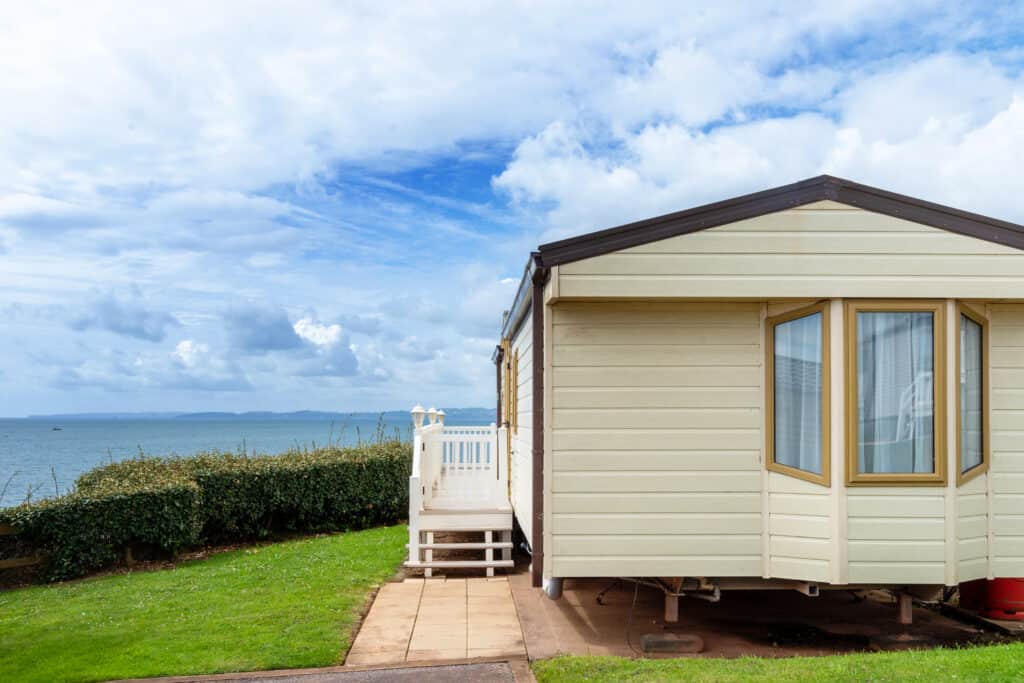
Manufactured housing is an excellent cheap housing option for large families. It is more traditional than other forms of alternative housing but less cost than a traditional home. You may have to pay lot fees to have it in a mobile home park, but that too is less than taxes in a regular neighborhood.
Other alternative housing ideas available
These options are more traditional; after all, you live inside a building of some kind, either a dorm/apartment type structure, house, hotel, or motel. Yet, these are some ways that people shelter without owning property.
Airbnb property manager – some Airbnb owners are looking for live-in managers to help guests, maintenance, and solve issues when they arise. This may be an opportunity if you’re handy, outgoing, and good with people.
Commune– Communes are a community of people who live together. People in a commune often share common interests, values, and beliefs. If you’re social and a people person, this living arrangement might be right for you.
Hostels– If you need a place, renting a bed in a hostel would work. In this environment, you are in a room with others who rent a bed. Some have private rooms for a higher price. Most have common living areas, bathrooms, and kitchens.
Hotels and motels– renting a more traditional room might be your speed if you’re traveling or exploring other types of housing options. Costs can range from inexpensive to luxury, but that is entirely within your control, depending on where you stay.
Couch surf– you could ask for a friend, family member, or co-worker to take you in for a while. Depending on your agreement, this could be temporary or more permanent if you help out.
Rent-a-room- if the couch surfing turns more permanent, maybe you can rent a room in the house. This can be very affordable and help save money while searching for another housing option.
Caretaker– Many people live alone and would be willing to share their home if you can help with essential maintenance, clean-up, and errands. As a caretaker, if you are training in primary care activities like cooking, cleaning, and general first-aid, you could help a homeowner with those services and companionship.
Long-term housesitting– Hire out your services as a housesitter while people are on vacation or out of town for work. You can help to ensure the home is taken care of while they are away and in good condition when they come back.
Alternative housing options abound if you put a little imagination into solving where and how to live and costs can vary. We will dive into other avenues of alternative housing and how they can revolutionize your lifestyle and the world, one house at a time. The alternative housing ideas vary as much as the type of house.
Alternative housing is any living space other than a single-family home. Alternative housing breaks the mold–showing people that you can live anywhere, in almost anything, and have a great life at the same time. Here are 25 ideas for you to start your adventure.
